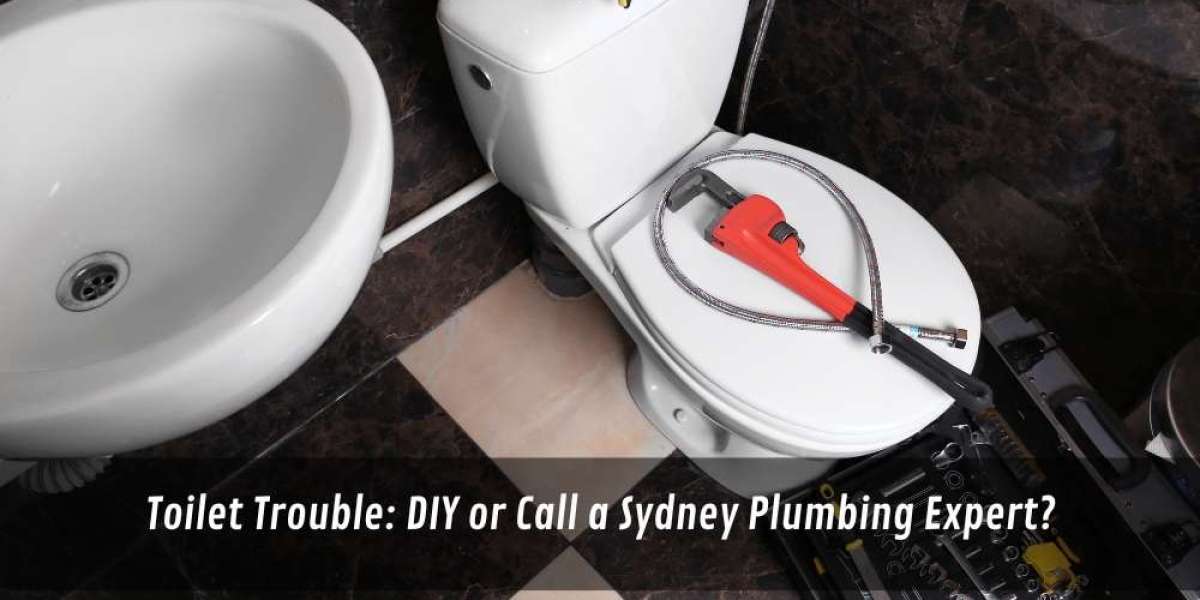There’s nothing quite like toilet trouble to throw off your day. One minute, everything’s fine, and the next, you’re staring at a bowl that won’t flush, makes weird noises, or worse — starts leaking at the base. It’s one of those situations that forces a snap decision: try to fix it yourself, or call in help?
I’ve had my fair share of late-night plunging and fiddling with tank parts, and while some issues are genuinely simple to solve, others can spiral quickly. The real challenge is knowing the difference. What starts as a mild inconvenience could be hiding a more serious plumbing fault. And in those moments, calling a local plumber Sydney residents trust can mean the difference between a quick fix and ongoing headaches.
Common issues you can often fix yourself
Not every plumbing glitch needs a professional. I remember standing in front of a constantly running toilet late one night, half-asleep, only to realise the flapper wasn’t sealing properly. No flood, no panic — just a $6 part from Bunnings the next morning.
Here’s a short list of the sorts of issues you can usually handle on your own — assuming you're comfortable getting your hands a bit dirty:
- Weak flush that barely clears the bowl
- Water running long after a flush finishes
- Jiggly or unresponsive flush handles
- Minor clogs that aren’t deep in the system
- Water levels are also high or low inside the tank
With these, the tools and fixes are basic. Most can be sorted with a screwdriver, a quick replacement part, or a plunger and some patience. That said, just because something’s common doesn’t mean it won’t go south quickly.
Signs it's time to bring in a professional
Now, on the other side of things — when is it definitely not worth the DIY gamble? Some issues look small but are really just surface symptoms of something much nastier behind the scenes. I've learned that the hard way, particularly when a slow flush turned out to be tree roots in the main line. Wish I was exaggerating.
Here are red flags to watch out for:
- Water leaking from the base of the toilet — often a sign of seal failure
- Multiple drains acting up at once — a red flag for sewer issues
- Odours near the toilet, even when it's clean, could indicate venting or drainage problems
- The toilet rocking or shifting when sat on — may point to flange damage
- Repeated clogs that keep coming back no matter what you try
If your toilet’s part of a larger problem in the system, pushing harder with DIY methods won’t solve it — and could actually make things worse.
Don’t overlook plumbing licence requirements
One thing that doesn't get talked about enough is whether the person doing the work is even supposed to be there. There’s a lot of “my mate can fix that” energy when it comes to home maintenance, and while that works fine for putting up a shelf, plumbing's a different beast entirely. In NSW, the plumbing licence requirements are in place for a reason.
Unlicensed plumbing isn’t just risky — it's often illegal. That includes changing pipework, altering drainage, or installing new fixtures. Licensed plumbers know how to get the job done safely, but more importantly, they know how to keep it compliant. The peace of mind you get from knowing the work won't cause future issues is worth more than the short-term convenience of a quick fix from someone unqualified.
The biggest misconceptions about plumbing
People mean well. They really do. But plumbing is one of those areas where outdated advice gets passed down like a family recipe — often with the same messy results. I’ve had mates swear by bleach tablets to “keep things clean” or suggest that a slow drain is just “settling.” Neither ended well.
A few myths that keep circulating:
- “Flushable wipes” are fine — they’re really not
- Slow drains are normal — they usually hint at a growing blockage
- Anyone can install a toilet if they follow instructions — alignment issues say otherwise
- Leaky seals fix themselves — they don’t
- A chemical cleaner is better than a snake — not if you like your pipes
These ideas sound helpful on the surface, but trusting them blindly can create more damage in the long run. That’s why recognising misconceptions about plumbing matters — they’re more common than you’d think, and they’re not always obvious until something fails.
Toilet issues could mean deeper blocked drain solutions
I used to think if the toilet’s acting up, the toilet’s the problem. Turns out, that’s not always true. There was one instance where we had three different fixtures gurgling when someone flushed the loo — and the culprit wasn’t the toilet at all. It was further down the pipe, buried under concrete.
That’s the tricky part — symptoms in the toilet can actually point to much deeper drainage problems. If you’re getting repeated backups, or if other drains in the house start to smell or empty slowly, you might be looking at a wider issue. That’s when blocked drain solutions become necessary. Whether it’s jet blasting, CCTV inspection, or something more invasive, solving it usually involves specialised tools and trained eyes.
Trying to brute force through it at home might buy you time, but it doesn’t solve what’s hiding further along the line.
Final thoughts
Toilets are one of those household systems we don’t think about — until they stop working. And when they do, everything else seems to stop too. In my experience, it’s always better to be slightly cautious than overly confident. A toilet that “mostly works” today might be the thing flooding your bathroom tomorrow.
Sure, a lot of fixes are totally manageable. But if you’re hesitating, especially after trying the usual suspects, don’t wait too long. Whether it's a sealing issue, an internal mechanism, or something that hints at a bigger system fault, trust your gut. And don’t forget that calling a local plumber in Sydney doesn’t mean you’ve failed — it means you’re taking the smarter route before the problem gets worse.



